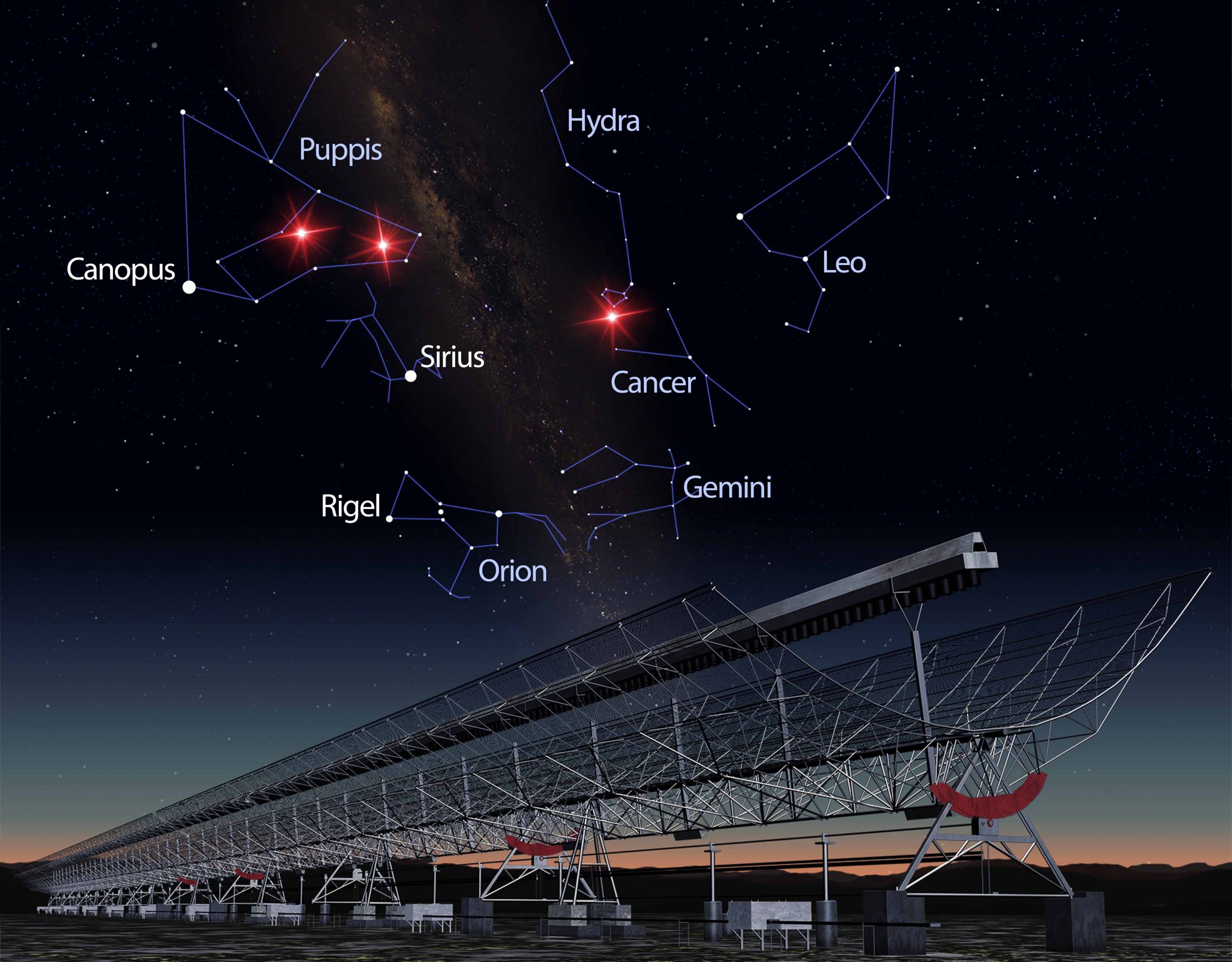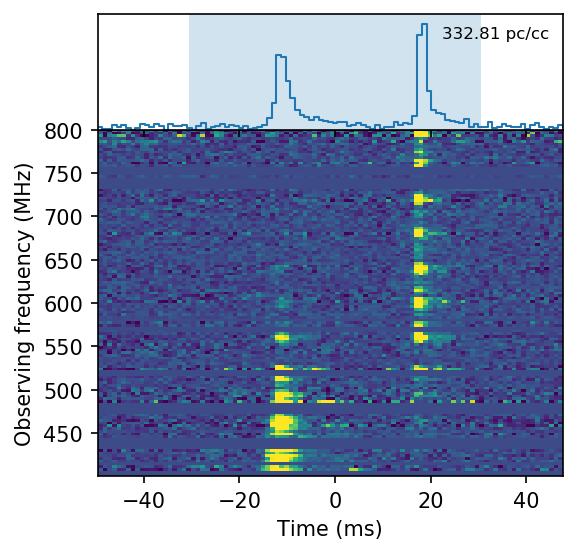

An illustration fast radio bursts in the night sky. Credit: James Josephides/Mike Dalley
Now and then there are bright flashes of radio light in the sky, and they are bothering astronomers. They are called Fast Radio Bursts (FRBs), and they’re like the chirp of a smoke alarm that needs its battery changed. They last for such a short time that it’s difficult to track down the source. They have become a nagging mystery in astronomy.


One of the reasons FRBs are difficult to study is because most radio telescopes only capture a small portion of the sky at any given time. So they have only been observed if they are in the telescope’s field of view. There’s no way to predict where one might occur, and their short bursts can sometimes be confused with radio interference from Earth.
This changed when the CHIME observatory came online. It has a wide field of view, so it can observe dozens of radio bursts every day. Recently CHIME detected an FRB much closer than ever detected. So close that it must have occurred within our own galaxy.
Astronomers determine the distance of a radio burst through what is known as its dispersion measure (DM). The more distant a radio source, the more interstellar gas it must travel through to reach us. As the radio burst travels through this interstellar medium, the signal spreads out in frequency. The greater this dispersion, the greater the distance.
This latest FRB came from the direction of a highly magnetic neutron star (or magnetar) known as SGR 1935+2154. The neutron star emits strong pulses of gamma rays and x-rays from time to time, and from this we know it is about 30,000 light years away. This distance is consistent with the DM meaure of the FRB, which makes the neutron star the likely source.
It has long been suspected that FRBs are caused by electromagnetic bursts of magnetars, similar to the way the magnetic field of the Sun creates solar flares. But since previous FRBs occurred within other galaxies, there was no way to confirm this. This latest burst gives us the first opportunity to verify the idea. If SGR 1935+2154 also happens to be a repeating FRB, then we should soon be able to solve the mystery of these cosmic radio chirps.
Reference: Paul Scholz. “A bright millisecond-timescale radio burst from the direction of the Galactic magnetar SGR 1935+2154.” The Astronomer’s Telegram 14:19 UT, 7 May (2020)
Astronomers have been battling threats to their clear skies on all fronts lately. One of…
If you were Captain of the first USS Enterprise, where would you go!? Humanity is…
Now is the best time to observe Mars in 2025. Mars from 2014. Credit: Paul…
Scheduled for launch in 2027, the Nancy Grace Roman Telescope is slowly being readied for…
Few places in the solar system are better suited to a balloon than Titan. The…
We reported before about a NIAC-funded project known as the Lofted Environment and Atmospheric Venues…